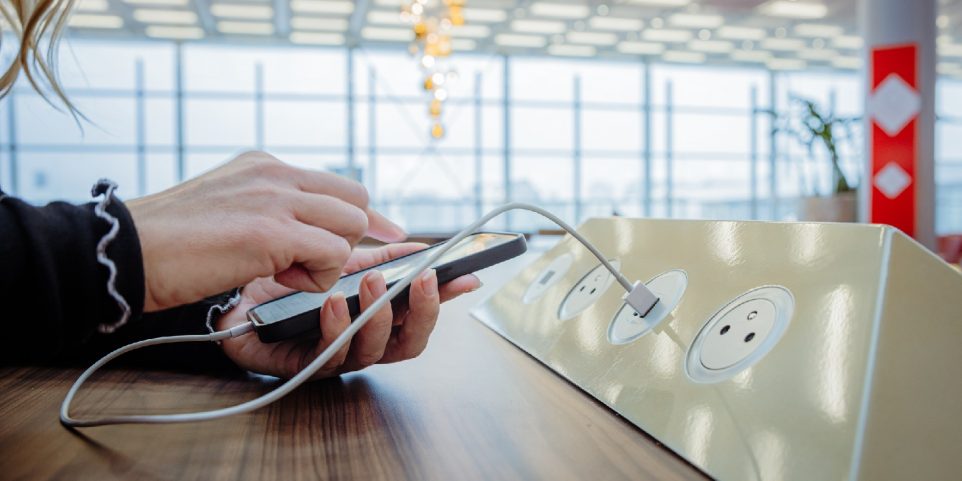What Are the Benefits of a Docking Station?

For many professionals, a reliable and flexible docking station is essential for their everyday productivity. Docking stations offer an incredible amount of convenience and practicality. They allow you to connect your laptop to a variety of peripherals and expand the capabilities of your computer. But what exactly is a docking station and how can it help you in your daily work?
What Is a Docking Station?
A docking station serves as a device that connects a laptop or other computer to additional peripherals while simultaneously powering the laptop. It usually comprises a box-like device with multiple ports. This enables the connection of various external devices to the laptop. In general, the dock directly attaches to one side of the laptop. The other side features slots for different types of equipment. These can include displays, consoles, keyboards, printers, mobile phones, external hard drives, and USB-C devices.
Benefits of a Docking Station
The main benefit of a docking station is that it allows you to quickly and easily connect multiple devices to the same connection. This greatly reduces clutter because it eliminates the need for multiple cables and adapters. Additionally, it simplifies the setup process by letting you attach all peripherals at once. Otherwise, you’d have to connect multiple devices separately. Furthermore, many docking stations are compatible with multiple operating systems, including Windows and Mac. In turn, you can work with multiple monitors from one single location.
Docking Stations vs. Other Computer Accessories
The main difference between a docking station and other computer accessories lies in the fact that a docking station acts as the central hub for peripherals. In contrast, devices are individually connected using cables and adapters. On the other hand, docking stations are a comprehensive solution when you want to connect multiple devices simultaneously. Additionally, most docking stations come equipped with proprietary technology. This enables them to provide features that cannot be achieved with conventional cables or adapters.
Types of Docking Stations
There are many different types of docking stations on the market today. The most common type is a USB-C docking station. This provides support for multiple devices and peripherals via one connection. There are also Thunderbolt 3 docking stations. These offer faster data transfer speeds than USB-C docks. They also provide support for up to four 4K displays at once. Plus, there are USB 3.0 and 2.0 docks. While these offer a larger number of ports, they don’t support 4K displays or offer any advanced features, like charging ports.
Considerations When Choosing a Docking Station
When choosing a docking station, there are several factors to consider. Think about the compatibility of the docking station with your laptop or desktop computer. Consider the number of available ports as well as the types of ports that are available. Keep the performance, power delivery, and cost in mind as well. You should also pay attention to things like build quality and additional extras. Ultimately, it’s important to choose a model that meets your specific needs in terms of performance and functionality while being affordable.
How to Set Up a Docking Station
Setting up a docking station is fairly straightforward. You only need to connect it to your laptop or desktop computer using the appropriate cable or adapter. Then, you can plug all your desired peripherals into the available ports on the dock. From there, your computer’s system should automatically recognize them. Finally, make sure everything is correctly connected before powering on the dock. This will ensure optimal performance.
Common Issues with Docking Stations
The most common problem encountered with docking stations is poor performance. This issue typically arises from the dock itself delivering inadequate power. Additionally, using incompatible cables or adapters during the setup process can also cause performance problems. Moreover, certain display types or resolutions may lead to compatibility issues with some models.
To resolve these issues, you can check for updated drivers on the manufacturer’s website and, if needed, contact technical support for assistance. It is important to note that improper cabling can create hot spots, which have the potential to damage both the dock and connected devices if left unaddressed for extended periods. To prevent such situations, it is crucial to regularly inspect connections for signs of wear and tear and promptly replace any faulty cables.
Your Trust, Our Core Commitment
At Rising Tech, earning and maintaining your trust is the cornerstone of our mission. We're dedicated to transparency, impartiality, and the relentless pursuit of truth in every article, review, and recommendation we publish. Our commitment to these principles ensures that you, our valued reader, are always equipped with reliable and unbiased information. Let us be your trusted guide in the ever-evolving world of technology.